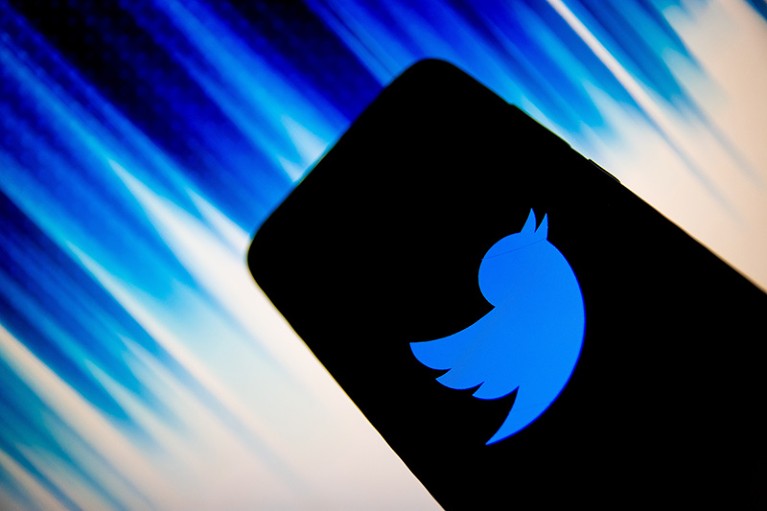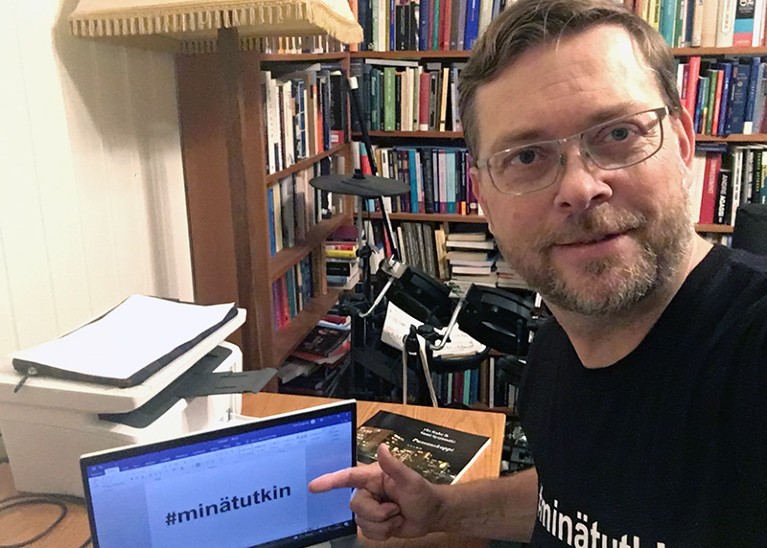
Credit: Nikolas Kokovlis/NurPhoto via Getty
In August 2021, a journalist in Finland criticized the value of certain research projects on Twitter. Others joined in, with a more hostile tone. Sami Syrjämäki, head of publications for the Federation of Finnish Learned Societies in Helsinki, which includes 282 societies and 4 academies of the arts and sciences, describes what happened next.
What was the background to the campaign?
Collection: Science communication
A journalist at one of Finland’s big media publishers tweeted critical comments about some research projects, saying, ‘This is not science, it’s ridiculous that these kinds of project are being financed by public money.’
A number of academics responded, hoping that others would read their replies and maybe learn more about research. But then, more journalists joined in on Twitter and on blogs, and their tone was not so nice. I was involved in these Twitter exchanges. We tried to explain how these projects are being evaluated. The discussion continued for a couple of weeks.
What happened next?
On 5 September, Tapio Määttä, academic rector at the University of Eastern Finland, tweeted that it might be a good idea for individual researchers to write a very simple tweet explaining what they are researching, in just 140 characters. Some of the researchers from his own university, which has campuses in Joensuu and Kuopio, did that, but not many.
How did it escalate?
I knew Määttä from Twitter. We’ve never met, but we have had many discussions on social media, defending researchers, science, universities and so on. I felt like I knew him. So I tweeted and said, “This is a great idea, but you need a hashtag to make it easier to find and follow the tweets.” We came up with #minätutkin (translated as ‘#I research’).
After that, the project started flying — basically, Twitter exploded. The University of Oulu, one of the largest academic institutions in Finland, encouraged its researchers to take part, and then I tweeted seven more universities to suggest that they do the same.

Sami Syrjämäki helped to start a hugely popular hashtag.Credit: Sami Syrjämäki
Describe the campaign’s impact.
For four days, from 6 September to 9 September, #minätutkin was the most popular Twitter hashtag in Finland, overtaking #huuhkajat (the hashtag of the national football team, which was playing against France) and #BigBrotherFinland (for the reality-television programme, which started on 5 September). If you compare this traction with that of the usual hot topics on Twitter, it was just crazy. The audience seemed to love it. One researcher who studied the impact found that there were almost 4,000 tweets with the hashtag in 4 days. Overall, the hashtag has been used more than 10,000 times — which, in a country with a population of 5.5 million, is amazing. Other researchers used #WeResearch and #ITeach.
People explained what they are researching in a simple way, without any aggression, and the quality of the discussion became much better. Also, researchers connected and reconnected with each other. Some have forged collaborations as a result. The mainstream media acknowledged the issue positively, and there were three or four articles on the movement, including a big one in Helsingin Sanomat, Finland’s largest national daily newspaper, based in Helsinki.
On 13 August, the Finnish government announced proposals for a €40-million (US$46-million) reduction in funding for research in its draft budget for 2022. But on the fifth day of the campaign (10 September), it was reported that this had been halted. Matias Mäkynen, a member of Parliament, who chairs the parliamentary working group on innovation and research, tweeted thanks for the campaign, and said these cuts have been withdrawn at least for this year. The minister of science and culture mentioned the campaign in a positive tone and thanked us for it. It might have been a coincidence, but I think the campaign had a part to play in that decision.
What can other researchers learn from your campaign?
Its success was due to the fact that it was not owned by anybody. It was not run by a university or organization. It was an easy way for many researchers to take part in discussions in safely: if someone tried to troll or mock a researcher, their tweets were drowned out by thousands of positive ones. This kind of campaign could be reproduced easily in any country where similar things are happening.
How did the journalist who made the first criticisms respond?
I haven’t seen a single comment!

 How an online community can support your career — and change things for the better
How an online community can support your career — and change things for the better
 How to use Twitter to further your research career
How to use Twitter to further your research career






